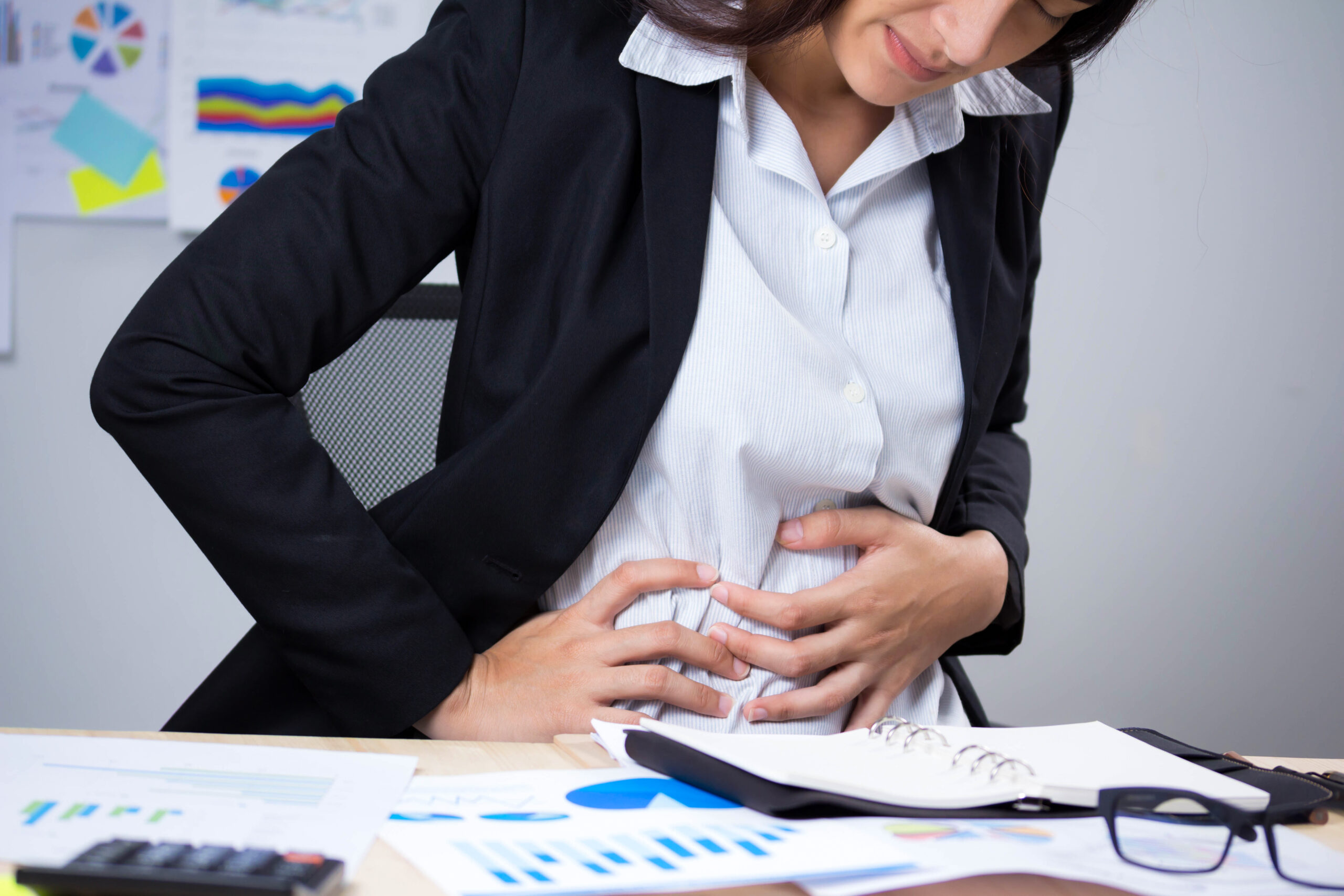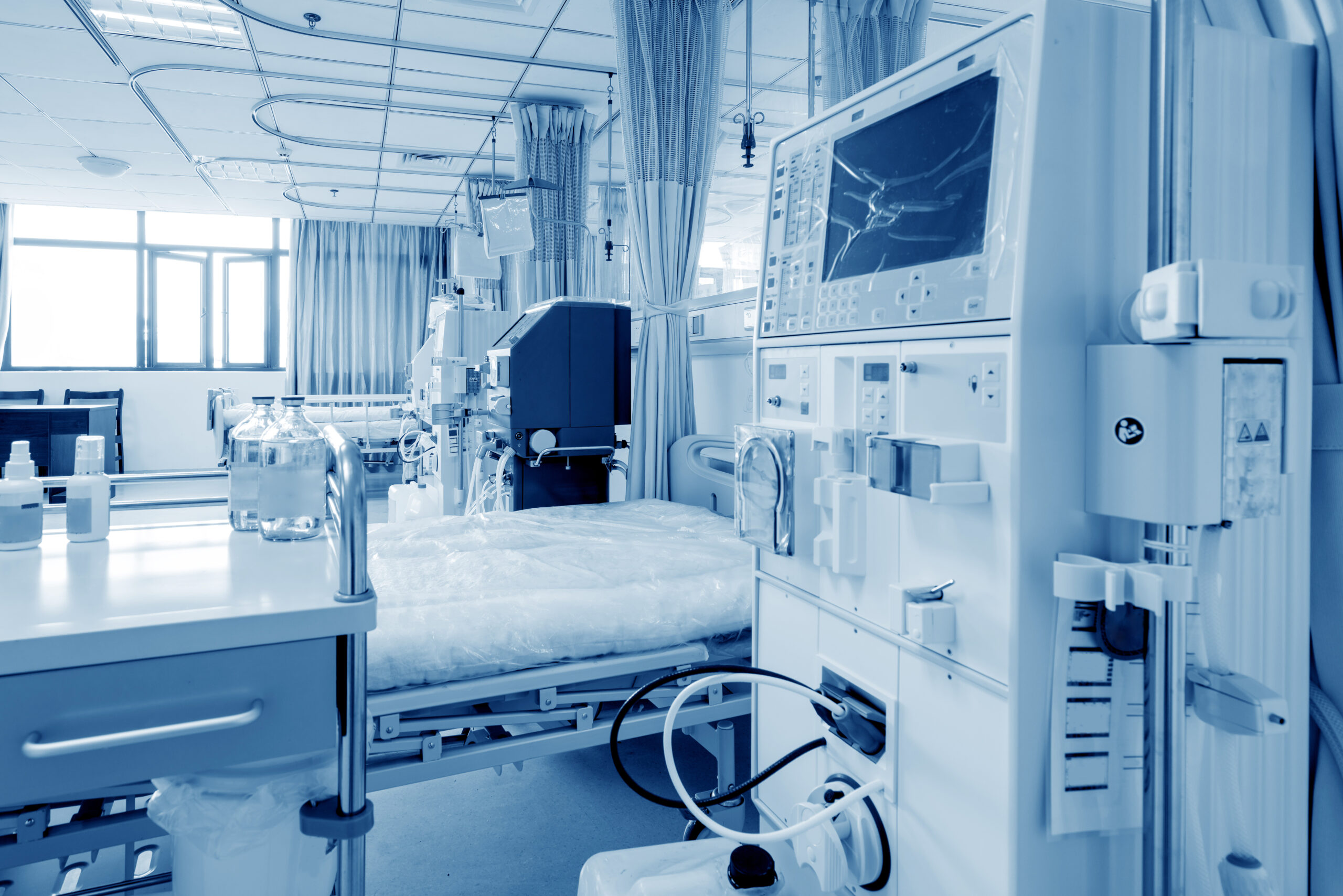What is cholecystitis?
Cholecystitis is an inflammation of the gallbladder, a small organ located under the liver that stores bile, a digestive fluid produced by the liver. The condition is most commonly caused by the obstruction of the cystic duct, which connects the gallbladder to the bile ducts, by gallstones (cholelithiasis). Obstruction of the cystic duct can lead to bile buildup and subsequently cause inflammation and infection of the gallbladder.
There are two main types of cholecystitis:
- Acute cholecystitis: This type occurs suddenly and usually presents with severe pain in the upper right abdomen, fever, nausea, and vomiting. It may be caused by gallstones, infection, or decreased blood supply to the gallbladder due to other conditions.
- Chronic cholecystitis: This is a long-standing inflammation of the gallbladder, typically caused by recurrent episodes of acute cholecystitis. The gallbladder may become thickened and scarred over time, leading to decreased function and the development of gallstones.
How does cholecystitis occur?
Cholecystitis occurs when the gallbladder becomes inflamed, usually due to an obstruction of the cystic duct, which connects the gallbladder to the bile ducts. The most common cause of this obstruction is the presence of gallstones, also known as cholelithiasis.
Gallstones form when substances in the bile, such as cholesterol or bilirubin, solidify and create small, hard deposits. When these gallstones block the cystic duct, bile produced by the liver cannot exit the gallbladder as it should. This leads to bile accumulation in the gallbladder, which can cause inflammation and potentially infection.
Other less common causes of cholecystitis include:
- Tumors: Abnormal growths in the gallbladder or nearby organs can compress and obstruct the cystic duct.
- Infection: Bacterial infections can lead to inflammation of the gallbladder, even in the absence of gallstones.
- Ischemia: Decreased blood supply to the gallbladder due to conditions such as diabetes or vasculitis can cause tissue damage and inflammation.
- Trauma: Physical injury to the gallbladder or the surrounding area can lead to inflammation.
Risk factors for developing cholecystitis include obesity, a high-fat diet, rapid weight loss, diabetes, and a family history of gallstones. These factors can contribute to the formation of gallstones and, in turn, increase the risk of cholecystitis.
What symptoms does a patient experience with cholecystitis?
Patients with cholecystitis can experience a range of symptoms, which may vary depending on whether the condition is acute or chronic. Common symptoms of cholecystitis include:
- Severe and sudden pain in the upper right abdomen (sometimes radiating to the right shoulder or back), often described as sharp, cramping, or aching. This is also known as biliary colic.
- Pain that worsens after eating, especially fatty or greasy foods.
- Nausea and vomiting.
- Fever and chills, indicating a possible infection.
- Jaundice (yellowing of the skin and eyes), which may occur if the bile duct is also obstructed.
- Abdominal bloating or fullness.
- Tenderness in the abdomen when touched.
In chronic cholecystitis, symptoms may be milder or intermittent, with recurrent episodes of abdominal pain and discomfort.
It is important to seek medical attention if you experience symptoms of cholecystitis, as untreated cases can lead to complications such as gallbladder rupture, infection, or inflammation of the pancreas (pancreatitis).
How is cholecystitis diagnosed?
Diagnosing cholecystitis typically involves a combination of the patient’s medical history, a physical examination, and imaging studies. The diagnostic process may include the following steps:
- Medical history: The healthcare provider will ask about the patient’s symptoms, their severity, and when they began. They will also inquire about any risk factors, such as obesity, a high-fat diet, rapid weight loss, diabetes, or a family history of gallstones.
- Physical examination: The healthcare provider will examine the patient’s abdomen to check for tenderness, swelling, or other signs of inflammation. They may also look for signs of jaundice (yellowing of the skin and eyes).
- Blood tests: Blood tests can help identify signs of infection, such as elevated white blood cell count, or check liver function, which may be affected in cases where the bile duct is also obstructed.
- Imaging studies: Various imaging techniques can be used to visualize the gallbladder and surrounding structures, detect gallstones, or evaluate inflammation. These may include:
- Abdominal ultrasound: This noninvasive imaging technique uses sound waves to create images of the gallbladder and can detect gallstones, wall thickening, or other signs of inflammation.
- Computed tomography (CT) scan: A CT scan can provide more detailed images of the abdomen and help rule out other causes of abdominal pain.
- Hepatobiliary iminodiacetic acid (HIDA) scan: This is a nuclear medicine test that involves injecting a radioactive tracer into the bloodstream. The tracer is taken up by the liver and secreted into the bile. Images are taken to track the flow of the tracer, which can help identify blockages or dysfunction in the gallbladder.
- Magnetic resonance cholangiopancreatography (MRCP): This noninvasive imaging technique uses magnetic resonance imaging (MRI) to visualize the bile ducts, pancreas, and gallbladder, and can help detect gallstones or duct blockages.
Based on the results of these tests and examinations, the healthcare provider can confirm a diagnosis of cholecystitis and recommend appropriate treatment options.
What is the treatment for cholecystitis?
Treatment for cholecystitis typically depends on the severity of the condition, the presence of complications, and the patient’s overall health. Common treatment options for cholecystitis include:
- Conservative management: In mild cases of cholecystitis, especially if gallstones are not present, initial treatment may involve conservative measures such as:
- Fasting: Temporarily refraining from eating can help reduce the workload of the gallbladder, allowing it to recover.
- Hydration: Maintaining adequate fluid intake is essential to prevent dehydration, especially if the patient is experiencing nausea and vomiting.
- Pain management: Nonsteroidal anti-inflammatory drugs (NSAIDs) or other pain medications can be prescribed to help alleviate pain.
- Antibiotics: If an infection is suspected or confirmed, antibiotics may be prescribed to treat the infection.
- Cholecystectomy: In more severe cases, or if the patient has recurrent episodes of cholecystitis, the surgical removal of the gallbladder (cholecystectomy) may be recommended. Cholecystectomy can be performed in two ways:
- Laparoscopic cholecystectomy: This is a minimally invasive procedure, where the surgeon makes several small incisions in the abdomen and uses specialized instruments to remove the gallbladder. Laparoscopic cholecystectomy is the most common method and has a shorter recovery time compared to open surgery.
- Open cholecystectomy: In this procedure, the surgeon makes a larger incision in the abdomen to remove the gallbladder. This method may be necessary in cases with complications or if the patient has had previous abdominal surgeries.
- Endoscopic retrograde cholangiopancreatography (ERCP): In cases where gallstones are blocking the bile duct or causing complications such as pancreatitis, ERCP may be performed. This procedure involves inserting an endoscope (a flexible tube with a light and camera) through the mouth, down the esophagus, and into the small intestine to access the bile ducts. Special instruments can then be used to remove the gallstones or place a stent to facilitate bile flow.
After treatment, patients can usually lead a normal life without a gallbladder, as the liver can still produce bile that flows directly into the small intestine. However, some dietary adjustments may be necessary, such as consuming smaller, more frequent meals and limiting the intake of fatty foods to avoid indigestion or diarrhea.
What are the typical outcomes for cholecystitis treatment?
The typical outcomes for cholecystitis treatment depend on the severity of the condition and the chosen treatment approach. The most common treatment for cholecystitis is the surgical removal of the gallbladder (cholecystectomy). Here are some typical outcomes for cholecystitis treatment:
- Successful surgery: Cholecystectomy, either laparoscopic or open, is generally considered a safe and effective treatment for cholecystitis. Most patients experience significant improvement in their symptoms after surgery and can return to their normal activities within a few weeks. Laparoscopic cholecystectomy is less invasive and typically results in shorter recovery time, less postoperative pain, and lower risk of complications compared to open surgery.
- Complications: Although complications are relatively rare, they can occur after a cholecystectomy. These may include infection, bleeding, injury to nearby organs (such as bile ducts, liver, or intestines), bile leakage, or an adverse reaction to anesthesia. Prompt identification and management of these complications can improve the patient’s outcome.
- Postoperative care: After surgery, patients are usually advised to rest and gradually resume their normal activities. They may be prescribed pain medications and antibiotics to prevent infection. Most patients can return to their normal activities within 1 to 2 weeks after a laparoscopic cholecystectomy or 4 to 6 weeks after an open cholecystectomy.
- Long-term outcomes: Generally, patients experience a full recovery after cholecystectomy with no long-term consequences. The liver continues to produce bile, which flows directly into the small intestine. However, some patients may need to make dietary adjustments, such as consuming smaller, more frequent meals and limiting the intake of fatty foods to avoid indigestion or diarrhea.
- Recurrence: Since the gallbladder is removed during the treatment, recurrence of cholecystitis is not a concern. However, patients may still develop gallstones in the bile ducts, which may require additional treatment.
Overall, the outcomes for cholecystitis treatment are generally favorable, with most patients experiencing symptom relief and a full recovery. Early diagnosis and intervention can help prevent complications and improve the overall prognosis.
What questions should I ask my doctor regarding cholecystitis?
If you have been diagnosed with cholecystitis or suspect you may have it, it’s important to ask your doctor questions to better understand the condition, its implications, and the appropriate course of treatment. Here are some questions to consider asking your doctor:
- What is the likely cause of my cholecystitis? Is it due to gallstones or another factor?
- What are the risk factors for developing cholecystitis, and do any of these apply to me?
- What tests or imaging studies do you recommend for confirming the diagnosis and assessing the severity of my condition?
- Are there any other conditions that could be causing my symptoms, and how can we rule them out?
- What are the treatment options for my cholecystitis? Is surgery necessary, or can it be managed conservatively?
- If surgery is recommended, what type of procedure will be performed (laparoscopic or open cholecystectomy)? What are the benefits and risks of each approach?
- What can I expect during the recovery process after treatment? How long will it take for me to return to my normal activities?
- Are there any dietary or lifestyle modifications I should make to help manage my condition or prevent it from recurring?
- What are the potential complications of cholecystitis if left untreated, and what signs should I watch for that might indicate a complication?
- If I experience any changes in my symptoms or develop new symptoms, when should I contact you or seek medical attention?
Remember, it’s important to have open communication with your healthcare provider to ensure that you fully understand your condition and the recommended course of treatment. Don’t hesitate to ask any additional questions or seek clarification on anything you don’t understand.




